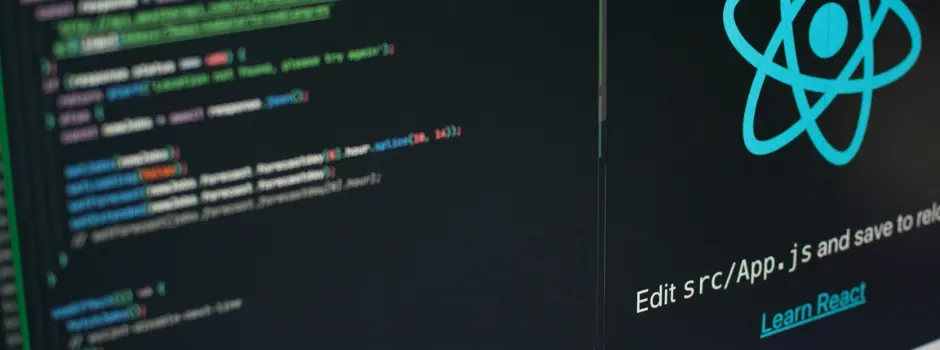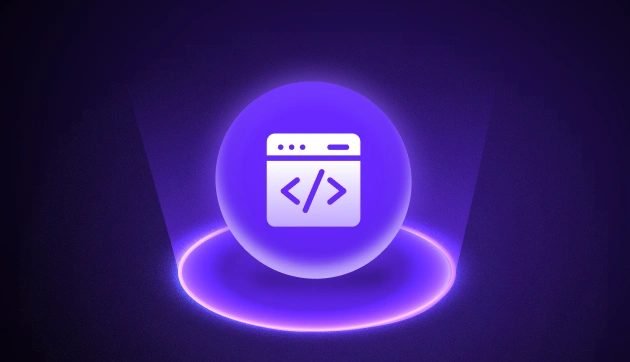
Interaction Between Frontend and Backend: Important Process That You Should Know
Mar 13, 2025 5 Min Read 8325 Views
(Last Updated)
A website is not just what you see on the surface. There are thousands of things that happen in the frontend and backend when you click a button. But, how do frontend and backend interact with each other?
This question must be in everyone’s mind who gets deep into technology wondering how websites work. Well, if you too have that question then you are at the right place.
This article will answer the question of how frontend and backend interact with each other, what are the components of it and how does it happen. So, without making you wait any longer, let’s get started.
Table of contents
- What is Frontend?
- What is Backend?
- How do Frontend and Backend Interact?
- A Simple Example
- Making It Work Together
- APIs: The Bridge Between the Frontend and Backend
- Understanding APIs
- How do APIs Facilitate Frontend and Backend Interaction?
- Why APIs Are Crucial?
- Conclusion
- FAQs
- Can the frontend work without the backend?
- What is a database and how does it relate to backend development?
- What is meant by "server-side" in web development?
- What's the difference between a web developer and a full stack developer?
- How important is it for a frontend developer to understand backend processes?
What is Frontend?

It is important to understand the basic terminologies and fundamentals of frontend and backend before digging deeper. So, for that, let us start with understanding the basics of frontend.
The frontend, or the client side of a web application, is the visual aspect that users interact with. It includes everything the user experiences directly: text, images, buttons, and navigation menus.
Technologies like HTML, CSS, and JavaScript are the building blocks of frontend development. HTML lays out the structure, CSS styles it and JavaScript adds interactivity.
It’s designed to be visually appealing and user-friendly, making sure you can find and do everything you need on the website.
When you scroll through a webpage, click a button to see more content, or fill out a form, you’re engaging with the frontend.
Before diving into the next section, ensure you’re solid on full-stack development essentials like front-end frameworks, back-end technologies, and database management. If you are looking for a detailed Full Stack Development career program, you can join GUVI’s Full Stack Development Course with Placement Assistance. You will be able to master the MERN stack (MongoDB, Express.js, React, Node.js) and build real-life projects.
Additionally, if you want to explore JavaScript through a self-paced course, try GUVI’s JavaScript certification course.
Learn More: 10 Best Frontend Development Frameworks
What is Backend?

The backend, or server-side, is the part that you don’t see but is constantly at work to make sure everything on the frontend runs smoothly. This is where the data processing happens. It’s the part of the web that greatly impacts your experience.
The backend is responsible for storing data, such as user profiles or posts, and serves that data to the frontend upon request.
It involves databases like MySQL or MongoDB and server-side languages like Python, Ruby, and Java. Think of it as the engine room of a ship, powering the vessel (the website) and ensuring everything runs smoothly.
It’s also where the website’s logic lives—deciding what you see based on your actions.
Explore: Top 6 Backend Frameworks That You Should Know
How do Frontend and Backend Interact?

When you visit a website, what you see and interact with is just the tip of the iceberg. Much like an iceberg, most of the action takes place below the surface. This unseen part is crucial for the visible part to function correctly.
The interaction between frontend and backend is a dance of requests and responses, facilitated by protocols like HTTP (Hypertext Transfer Protocol).
When you, the user, act on the frontend (like clicking a ‘submit’ button on a form), the frontend code sends a request to the backend. This request could be to retrieve data (GET request) or to send data (POST request), among other actions.
Once the backend receives the request, it processes it – querying the database, making calculations, or any other necessary action – and sends back the data or confirmation to the frontend.
The frontend then takes this data and updates the web page accordingly. This process is often asynchronous, meaning the page doesn’t need to reload completely to show new data. Technologies like AJAX and frameworks like React or Angular have made these interactions smoother and more dynamic.
Also Read: React vs Angular vs Vue: Choosing the Right Framework
Here’s a simple way to understand it:
- You Make a Request: When you act on a website (like searching for a product), you’re sending a request from the frontend to the backend. It’s like asking a question.
- The Backend Processes It: The backend takes your request, figures out what needs to be done (like looking up the product in a database), and prepares the answer.
- You Get a Response: The backend sends the answer back to the frontend, which then shows you the information or changes based on the response (like displaying your search results).
This conversation between the frontend and backend happens quickly, often without you even noticing.
Also Explore: Frontend vs Backend Development: Top 7 Differences
A Simple Example
Here is a simple example of what we have seen earlier that can help you understand better the interaction between the frontend and the backend.
Let us imagine that you’re ordering a pizza online. You choose your toppings and size on the website (frontend) and then click the order button.
This sends a request to the restaurant’s system (backend) to prepare your pizza with those specific toppings and sizes.
The backend processes this order, updates the database to include your order details, and sends a confirmation back to the frontend, which then shows you an estimated delivery time. All of this happens in the background, ensuring a smooth ordering process for you.
This is how frontend and backend seamlessly interact with each other to make our websites work better and smoother.
Making It Work Together
For a website or application to work seamlessly, developers need to ensure that the frontend and backend are perfectly in sync. This requires careful planning, constant communication, and testing. That is where API comes in.
Read More: Full Stack Developer: Discover the Fastest Route to Becoming One
APIs: The Bridge Between the Frontend and Backend
By now, you must have an understanding of how the frontend and backend interact with each other but let’s go a bit deeper and understand what enables this interaction.
Well, a silent facilitator is working tirelessly behind the scenes, making all this possible: the API, or Application Programming Interface.
Let’s dive deeper into what an API is, breaking it down into simple terms, and explore how it plays a crucial role in the interaction between the frontend and backend of applications.
Understanding APIs
Think of an API like the menu in a restaurant. The menu provides a list of dishes you can order, along with a description of each dish. When you specify which dish you want, the kitchen (i.e., the system) prepares the meal and serves it. In this analogy, the menu is the API, the order is the request, and the dish that’s served to you is the response.
In more technical terms, an API isn’t the database or the server; it’s the code that governs the access points for the server.
For instance, when you use an app on your phone, the app connects to the Internet and sends data to a server. The server then retrieves that data, interprets it, performs the necessary actions, and sends it back to your app. The app then interprets the data and presents you with the information you are looking for. This back-and-forth process is orchestrated by an API.
Must Read: Use ReactJS to Fetch and Display Data from API – 5 Simple Steps
How do APIs Facilitate Frontend and Backend Interaction?
To understand how APIs aid in the interaction between the frontend and backend, let’s simplify it:
- Frontend Requests via APIs: When you interact with the frontend of an application, like clicking a “View Profile” button, the frontend uses an API to send a request to the backend. It’s similar to ordering a dish from the menu. The frontend tells the backend what it needs using the “language” defined by the API.
- Backend Processes and Responds: The backend receives the request and knows exactly what to do thanks to the API. It’s like the kitchen knowing how to prepare your dish based on the order. The backend accesses the necessary data (such as the user’s profile details) and processes it as needed.
- API Delivers the Backend’s Response to the Frontend: Once the backend has processed the request, it sends the data back to the frontend via the API. This is like the waiter bringing your dish to the table. The frontend then takes this data and displays it to you in a user-friendly way.
Why APIs Are Crucial?
APIs are crucial for several reasons:
- Efficiency and Speed: APIs allow the frontend and backend to communicate quickly and efficiently, ensuring that the application runs smoothly and the user experience is seamless.
- Simplicity: APIs simplify the development process by enabling the frontend and backend to exchange data without the need for constant direct communication. Developers don’t need to know how the backend is implemented to make requests from the frontend; they just need to know the “language” of the API.
- Flexibility: With APIs, developers can easily add new features to the frontend without making significant changes to the backend and vice versa. This makes applications more flexible and easier to update or maintain.
This is how and why APIs are important for the interaction between frontend and backend.
Kickstart your Full Stack Development journey by enrolling in GUVI’s Full Stack Development Course with Placement Assistance where you will master the MERN stack (MongoDB, Express.js, React, Node.js) and build interesting real-life projects. This program is crafted by our team of experts to help you upskill and assist you in placements.
Alternatively, if you want to explore and learn JavaScript through a self-paced course, try GUVI’s JavaScript course.
Conclusion
In conclusion, the interaction between frontend and backend is like a perfectly orchestrated dance, where the frontend represents the visible interface that users interact with, and the backend is the hidden engine that processes data and makes the web application function.
Through a series of requests and responses, facilitated by APIs, the frontend and backend communicate effectively to provide a seamless and dynamic user experience.
This relationship is crucial for the creation of responsive, efficient, and intuitive web applications, demonstrating the importance of harmonious frontend and backend collaboration in the digital world.
Also Read: Top Full Stack Development Trends
FAQs
While the frontend can display static information without the backend, dynamic interactions, such as user authentication or data retrieval, require communication with the backend.
A database is a structured collection of data. In backend development, databases store application data, and backend services query the database to retrieve, insert, or update data as needed.
“Server-side” refers to operations that take place on the server rather than on the client’s browser. This includes database operations, authentication, and serving application logic
A web developer may specialize in either frontend or backend development, while a full stack developer has expertise in both areas, enabling them to build complete web applications.
It’s very important, as understanding backend processes helps frontend developers make informed decisions about data handling, application structure, and user experience.































Did you enjoy this article?